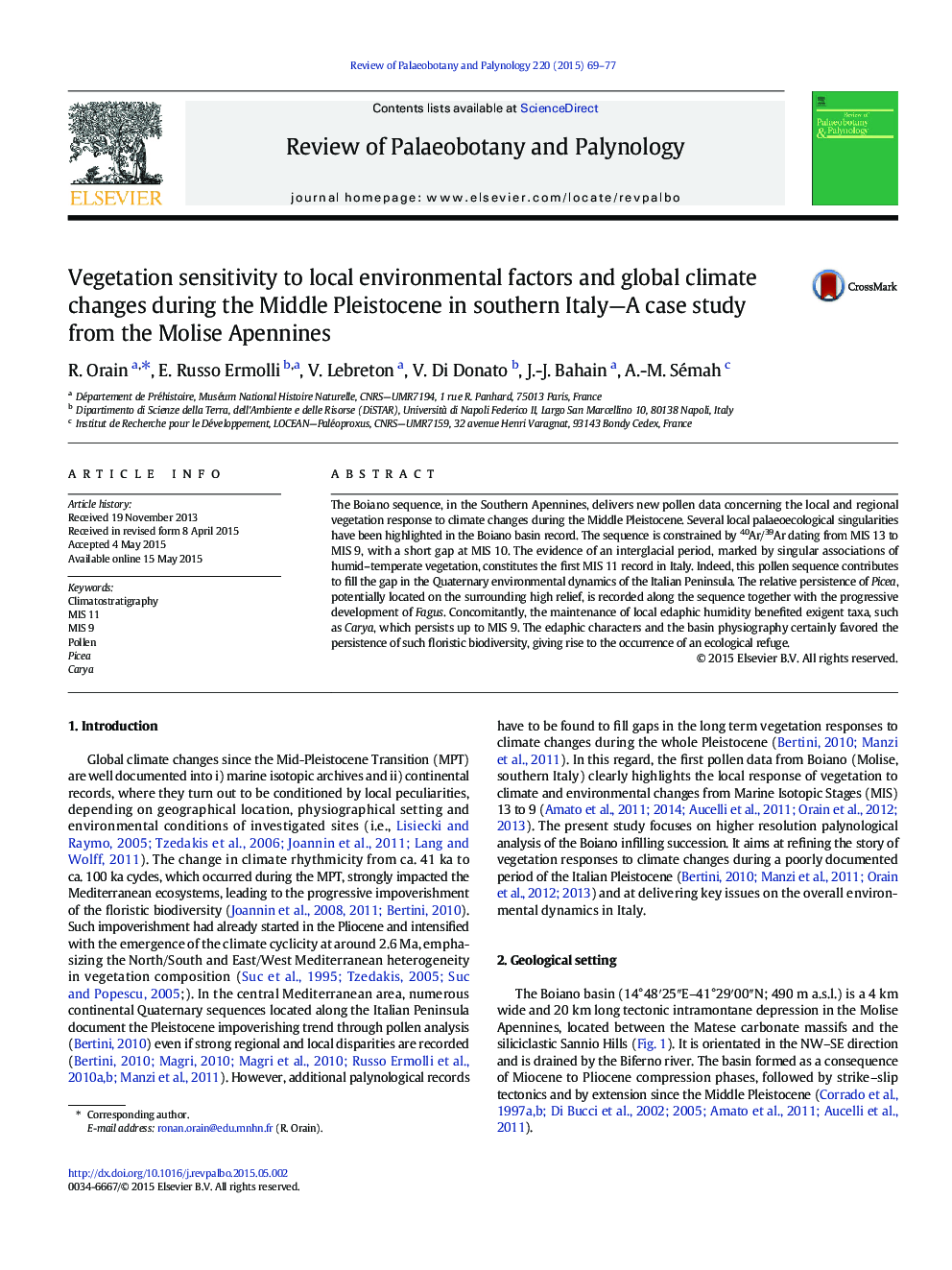| Article ID | Journal | Published Year | Pages | File Type |
|---|---|---|---|---|
| 6448636 | Review of Palaeobotany and Palynology | 2015 | 9 Pages |
Abstract
The Boiano sequence, in the Southern Apennines, delivers new pollen data concerning the local and regional vegetation response to climate changes during the Middle Pleistocene. Several local palaeoecological singularities have been highlighted in the Boiano basin record. The sequence is constrained by 40Ar/39Ar dating from MIS 13 to MIS 9, with a short gap at MIS 10. The evidence of an interglacial period, marked by singular associations of humid-temperate vegetation, constitutes the first MIS 11 record in Italy. Indeed, this pollen sequence contributes to fill the gap in the Quaternary environmental dynamics of the Italian Peninsula. The relative persistence of Picea, potentially located on the surrounding high relief, is recorded along the sequence together with the progressive development of Fagus. Concomitantly, the maintenance of local edaphic humidity benefited exigent taxa, such as Carya, which persists up to MIS 9. The edaphic characters and the basin physiography certainly favored the persistence of such floristic biodiversity, giving rise to the occurrence of an ecological refuge.
Related Topics
Physical Sciences and Engineering
Earth and Planetary Sciences
Palaeontology
Authors
R. Orain, E. Russo Ermolli, V. Lebreton, V. Di Donato, J.-J. Bahain, A.-M. Sémah,
